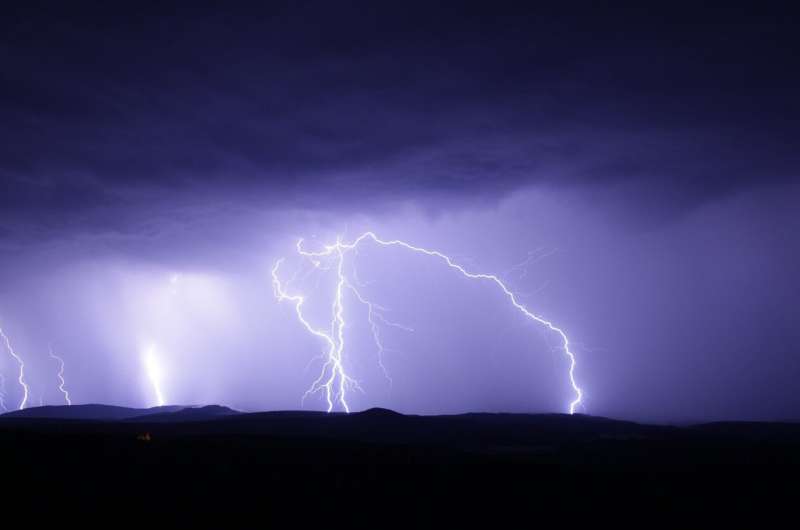
European research is expanding clean-energy options, bolstering the EU’s goal to become climate-neural by 2050.
As the European Union strives for climate neutrality by mid-century, a mother-and-son team is helping to tackle a potential hurdle: the limited number of renewable-energy sources driving the EU’s shift away from fossil fuels.
Andriy Lyubchyk is a partner in the CATCHER project, which aims to expand a clean-energy mix by perfecting the conversion of atmospheric humidity into electricity.
Old dream
The technique involves harvesting the tiny charges of static electricity contained in gaseous water molecules, which are ubiquitous in the atmosphere. The process is known as hygroelectricity or humidity electricity.
“With this new renewable-energy source, we believe we will drastically increase the efficiency and the possibilities of the green-energy transition,” said Lyubchyk, chief executive officer of Portuguese start-up Cascatachuva Lda. He is also a chemical engineer at Lusophone University of Humanities and Technologies in Lisbon, Portugal.
In the early 1900s, Serbian-American inventor Nikola Tesla dreamed of harnessing energy from the air. He ran a series of experiments trying to capture electrical charges from the atmosphere and transform them into an electric current.
Since Tesla’s time, scientists have learned more about how electricity is formed and released in the atmosphere and discovered that water vapor can carry an electrical charge.
The know-how could be a boost for the EU, which gets about 22% of its energy from renewables. It is on track to tighten an end-of-decade target for such sources, which also include hydropower, to as high as 45%.
But, for Europe to become climate-neutral by 2050, renewables will have to play an even bigger role and hygroelectricity would give the EU more options as it seeks to abandon oil, natural gas and coal.
New technology
The CATCHER project brings together eight partners from six countries in Europe to explore the possibility.
While the general idea might be the same, the particular technology used by CATCHER is very different to Tesla’s. The project uses panel-like cells made from zirconium oxide—a hard crystalline material—to capture energy from atmospheric humidity.
Zirconium oxide is a ceramic material widely used for such things as dental implants, advanced glass-like materials, electronics and cladding for nuclear fuel rods.
When exploring the properties of nanomaterials made from zirconium oxide seven years ago, researchers started to see evidence of hygroelectricity, according to Svitlana Lyubchik, who coordinates CATCHER and is the mother of Andriy Lyubchyk.
Like him, she is a chemical engineer at Lusophone University. They undertook various initiatives to try to exploit this potential.
The researchers are now at the point where an 8-by-5-centimeter plate of their material can generate around 0.9 volt in a laboratory with a humidity of around 50%. This is comparable to the power output of half an AA battery.
Working to make its hygroelectricity material more efficient, the team expects that, once perfected, the cells will be able to harvest the same amount of electricity as similar-sized photovoltaic cells.
The researchers also believe that the cells will be deployed in a similar way to solar panels—either as large-scale electricity farms or as a power source for individual buildings.
Steady states
The cells are created by producing very small, uniform nanoparticles of zirconium oxide and then compressing them into a sheet of material with a similar structure throughout including a series of channels, or capillaries.
The nanostructure generates electrical fields inside the capillaries that separate the charge from water molecules absorbed from the atmosphere, according to Andriy Lyubchyk.
The result is a cascade of physicochemical, physical and electrophysical processes that capture the electrical energy.
In one respect, the new technology will have an advantage over solar and wind energy. While panels and turbines have to be positioned to capture sunlight and wind, hygroelectricity cells need no particular placement because little variation exists in local humidity levels.
That said, hygroelectricity cells won’t necessarily be an option everywhere because they require minimum levels of humidity to work.
“For example, if it is -15 degrees outside, so everything is frozen, there will be no water in the air,” said Andriy Lyubchyk.
Ceiling solution
He is also coordinator with his mother of the SSHARE project, which is working on a real-world application by incorporating hygroelectricity cells into a heating and cooling system.
“We combine both technologies and make them self-sufficient,” said Andriy Lyubchyk.
The heating and cooling system is based on an advanced radiant panel that can be mounted in the ceiling of a room.
Perforated water pipes pass above the panel feeding it hot or cold water, depending on whether the aim is to heat or cool the room. The panel then radiates heat into—or absorbs heat from—the room via atmospheric humidity rather like way skin can emit heat via perspiration.
The system should be able to power the pumps that circulate water using hygroelectricity generated from the passage of water vapor in and out of the panel.
The self-sufficient heating system highlights how hydroelectricity can help spur the net-zero energy transition, the researchers say.
“We can contribute to EU policy in terms of energy independence,” said Svitlana Lyubchik.
Citation:
Realizing a century-old dream to make electricity from air (2022, December 19)
retrieved 19 December 2022
from https://techxplore.com/news/2022-12-century-old-electricity-air.html
This document is subject to copyright. Apart from any fair dealing for the purpose of private study or research, no
part may be reproduced without the written permission. The content is provided for information purposes only.
Stay connected with us on social media platform for instant update click here to join our Twitter, & Facebook
We are now on Telegram. Click here to join our channel (@TechiUpdate) and stay updated with the latest Technology headlines.
For all the latest Technology News Click Here
For the latest news and updates, follow us on Google News.
